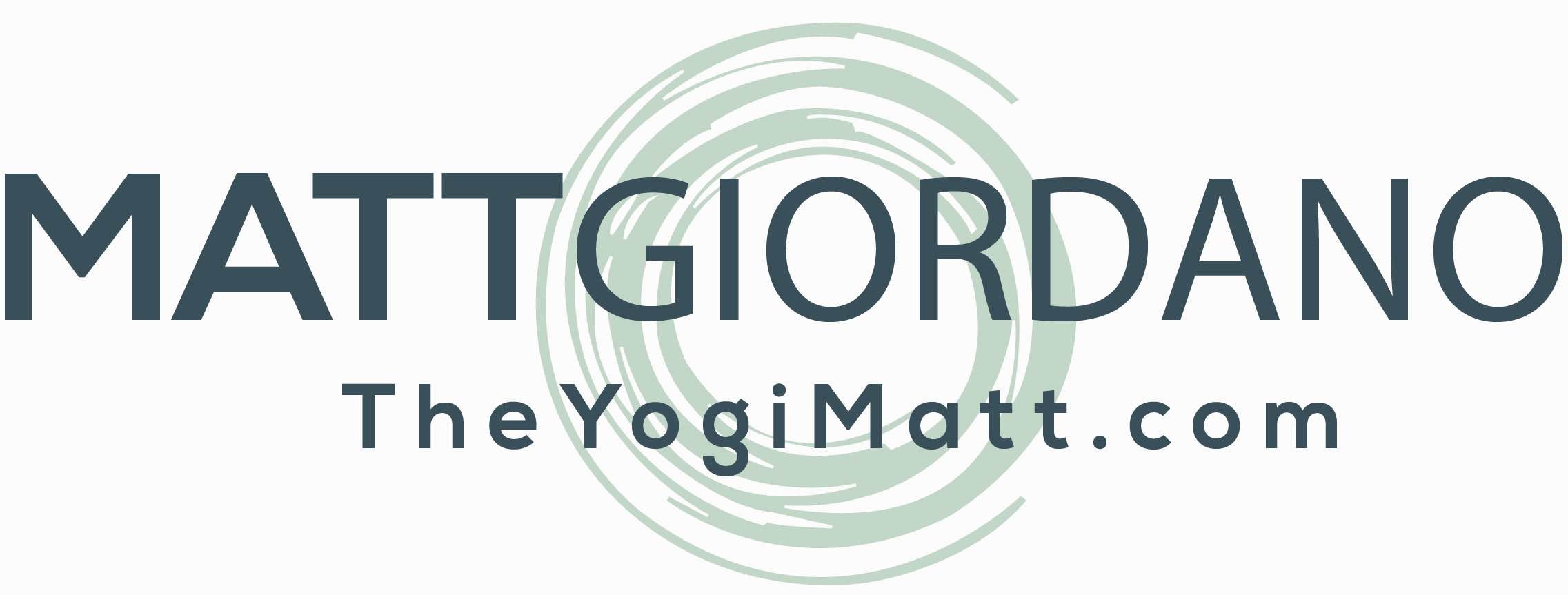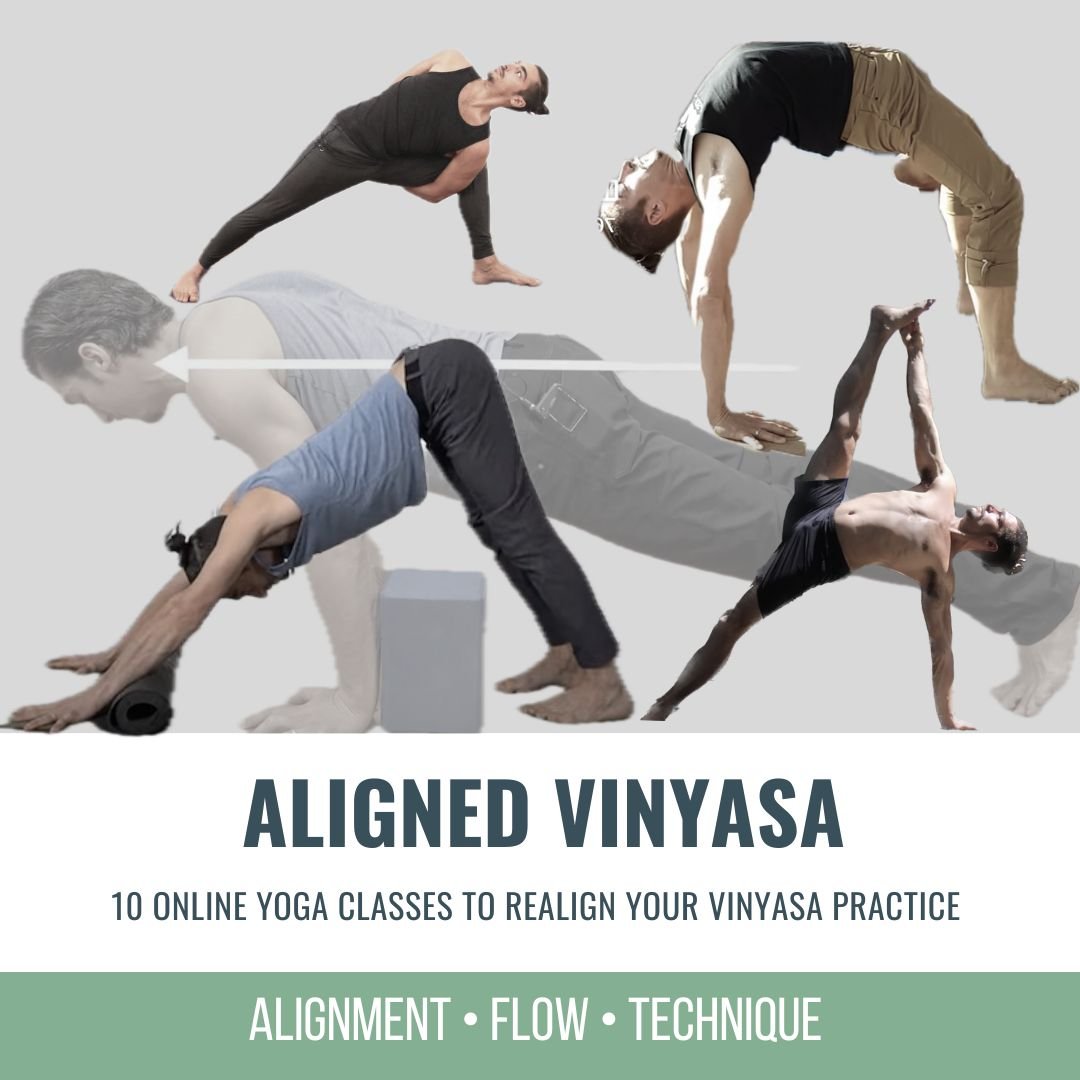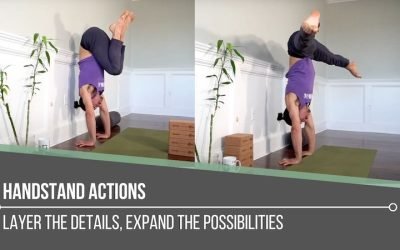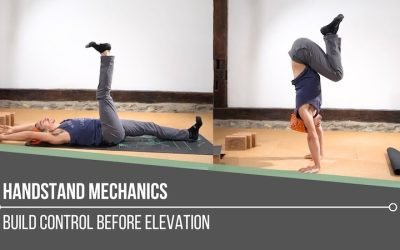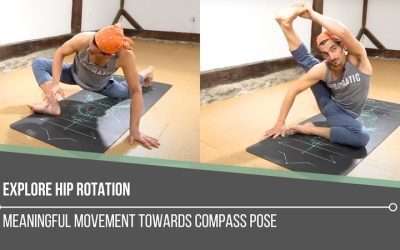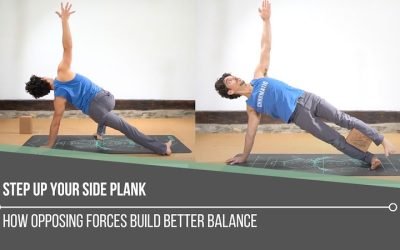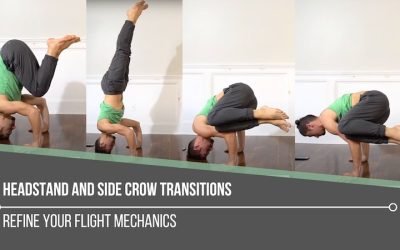Handstand ActionsLEAN, GRIP, PUSHHANDSTAND ACTIONS Handstand isn’t something we conquer in a single class, it’s a layered process that demands repetition and refinement. There are certain key handstand actions that are non-negotiable: lifting the shoulders up to the...
Step Up Your Side Plank
Step Up Your Side Plank
VASISTHASANA
STEP UP YOUR SIDE PLANK
Side Plank might look simple, but true proficiency starts in the details. One of the keys to refining the posture is learning how opposing muscle groups create an isometric contraction—a subtle engagement that promotes shoulder stability. For this to happen, we need to maintain a neutral torso with abdominals engaged, and externally rotate the shoulder while resisting with internal rotational force. This “opposite action without movement” helps lock the arm bone into the shoulder socket and stabilizes the scapula. In Matt’s demonstration, it’s clear: “Step up your side plank” means learning how to create this balance of effort across the shoulder joint. Rather than “muscling through,” we begin to feel how smaller adjustments in alignment create deeper strength and more sustainable effort—especially in a pose that tends to rely on momentum more than mindful mechanics.
ALIGNED VINYASA
REGISTRATION NOW OPEN
- 10 Chromatic Yoga practices with founder Matt Giordano
- Full length 75 minute classes
- 10 Peak Postures: The Most Essential Poses of the Vinyasa Practice
- Meticulously Crafted Experiences to Enhance Your Postural Practice
- Non-dogmatic, Anatomy informed Alignment
- The Perfect Blend of Knowledge and Practice
- A Heavy Emphasis on Technique for the Poses Everyone Expects You to Know but No One Teaches
- 12 Continuing Education hours with Yoga Alliance
- 12 Accredited Hours with the Chromatic School of Yoga
- Step-by-Step instruction for increased accessibility
- Sweat, Breath, Strengthen, Stretch and Feel Amazing!
MODIFIED SIDE PLANK
In the modified variation, Matt challenges a standard setup cue: stacking the shoulder directly over the wrist. Instead, he places the hand slightly in front of the shoulder, which changes the muscle activation completely. Without this thoughtful alignment, the bicep tends to roll inward, leading to instability or wear over time. Matt’s cue to turn the bicep forward resets the shoulder blade: the head of the humerus draws back, and the wingtip of the scapula tucks inward, setting up a subtle backbend through the thoracic spine. Then comes the magic—keeping the arm externally rotated while applying isometric internal rotation without actual movement. This locks the shoulder blade onto the spine and the arm bone into the socket. It’s a subtle but powerful engagement that stabilizes the entire structure, preparing us for more weight and complexity later in the sequence.
WATCH THE VIDEO
STEP UP YOUR SIDE PLANK: HOW OPPOSING FORCES BUILD BETTER BALANCE
PRACTICE AT THE WALL
Practicing at the wall allows us to fine-tune without bearing our full weight. Matt demonstrates how placing the hand just above shoulder height invites more scapular control. From here, we intentionally internally rotate and then roll out again, mimicking the external rotation cue. Once aligned, we stop the rotation—allowing opposing muscles to engage simultaneously, creating the tension that builds joint stability. As the movement progresses, we pull the ribs down while maintaining scapular position and external arm rotation. This combination—posterior tilt of the scapula with rib cage flexion—locks the shoulder blade into the ribcage, providing greater strength at the scapulocostal joint. With this stable base, we begin to shift more weight onto the hand—no longer guessing whether we’re aligned correctly, but knowing through structure and sensation. This is where Chromatic Yoga shines: in teaching how layered action leads to powerful, injury-resistant posture.
200 HOUR ONLINE TEACHER TRAINING
GET CERTIFIED & DEEPEN YOUR YOGA PRACTICE
- Deepen your yoga practice
- Build confidence speaking in front of groups in person and online
- Learn foundational class structures and templates
- Learn techniques for a wide range of yoga postures
- Get certified and highly qualified to teach yoga
- Yoga Alliance Globally Recognized Certification Program
ADD MORE WEIGHT
Once the groundwork is stable, the shoulder joint can handle more. In this next phase, Matt adds weight through the hand while maintaining structure. The body is now ready—not because of brute strength, but because the stabilizers are active, aligned, and intelligently sequenced. Chromatic Yoga’s layered method ensures that each progression builds on the last. No step is arbitrary. Whether the weight is placed through the knee or the hand, the increase in load now becomes a functional test of the joint’s ability to handle stress. The results? More power, more safety, and more confidence in your ability to handle transitions, vinyasa sequences, or long holds in Side Plank. This isn’t just harder—it’s smarter. When we step up your side plank, we do it with intention and awareness, not just challenge for challenge’s sake.
300 HOUR ONLINE TEACHER TRAINING
GET 500 HOUR CERTIFIED AS A MASTER TEACHER
Master your skill set as a teacher through refined techniques, anatomy, biomechanics, sequencing, philosophy, meditation techniques, theming, yoga business, and much more!
- Get 500 hour certified
- Learn anatomy, biomechanics, asana techniques
- Expand your teaching skills
- Masterful sequencing and verbal delivery
- Learn meditation and breathwork techniques
- Transformative tools: theming, dharma talks, satsang
FULL SIDE PLANK: SMALL TOOLS, BIG RESULTS
With all elements in place, we reach full Side Plank with more precision. Matt adds a block between the knees, thighs, or shins to add proprioceptive feedback and groin activation. Squeezing the block ignites the adductors and psoas, turning Side Plank into a full-body engagement. This isn’t about making it harder—it’s about making it deeper. For some, the block adds intensity. For others, it stabilizes and clarifies. Either way, this added tool invites awareness into parts of the body we often overlook in “basic” shapes. Most importantly, this blog reveals the truth: Side Plank might appear simple, but when we layer in knowledge, it becomes a sophisticated blueprint for strength, stability, and refinement. Step Up Your Side Plank, and you might find you’re not just training the shoulder—you’re evolving the entire pose from the ground up.
Continue to evolve by registering for Matt’s current online 10 class immersion Aligned Vinyasa.
The 200 Hr. Teacher Training: Click Here to See the Next Start Date
The 300 Hr. Advanced Teacher Training: Click Here to See the Next Start Date
Article by Trish Curling
Video Extracted From: Aligned Vinyasa Immersion
ONLINE ANATOMY COURSE
- Accessible, exciting, and easy to learn
- Anatomy and biomechanics for yoga
- Appropriate for both teachers and students
- Learn joint alignment vs pose alignment
- Demystify yoga poses and transitions
- Release aches and pains
- Learn how to avoid common injuries
- Caters to all levels with modifications and props
- 20 hours Continued Education Credits with Yoga Alliance
- 20 hours toward Chromatic Yoga Certification and 300 Hour
- Lifetime access
Continue Learning
Handstand Actions
Handstand Mechanics
Handstand MechanicsINVERSIONHANDSTAND MECHANICS Stability, strength, and coordination come together in the pursuit of mastering handstand mechanics. One of the most critical foundations is internal rotation at the hip joints, which can aid with certain entries and...
Stable Sirsasana
Stable SirsasanaHEADSTANDSTABLE SIRSASANA Creating a stable Sirsasana is less about the final pose and more about the mechanics that lead us there. From weight transfer and spinal alignment to hamstring flexibility and shoulder engagement, each layer matters. Unlike...
Explore Hip Rotation
Explore Hip RotationSURYA YANTRASANAEXPLORE HIP ROTATION Hip rotation isn’t just an anatomical concept—it’s an open invitation to become more intimate with our body’s story. In yoga, we often live in lateral (external) rotation, especially in hip-opening postures....
Step Up Your Side Plank
Step Up Your Side PlankVASISTHASANASTEP UP YOUR SIDE PLANK Side Plank might look simple, but true proficiency starts in the details. One of the keys to refining the posture is learning how opposing muscle groups create an isometric contraction—a subtle engagement that...
Headstand and Side Crow Transitions
Headstand and Side Crow TransitionsPARSVA BAKASANAHEADSTAND AND SIDE CROW TRANSITIONS Mastery begins with mechanics, especially when it comes to headstand and side crow transitions. Each posture on its own demands control, coordination, and a deep understanding of...
THE FREE TECHNIQUE PACK
When You Subscribe, You Will Get Instant Access to
- the Technique Pack: 15 yoga pose breakdowns
- exclusive online course discounts
- exclusive blogs and videos
